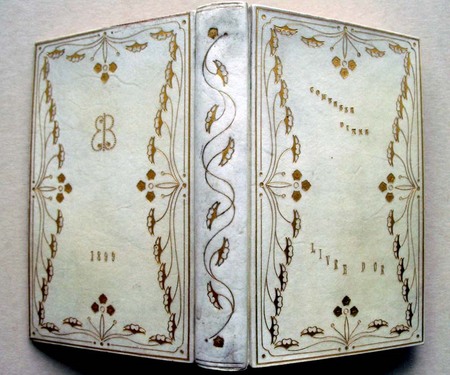“In an age largely given over to utilitarianism,” writes Elliot Anstruther, “it is gratifying to find purposes and persons at variance with the conditions around them, and in no field is the discovery more productive of satisfaction than in that of industry. …The introduction of machinery has nearly lost to us the self-reliant, consciously-proud figure of the English craftsman; the old Trade Guilds, with their dignified constitutions and worthy aims, had little in common with their corporate successors of to-day, and the stress of competition has driven thousands of women and girls into the already overcrowded ranks of suppliant labour.” (Introduction, The Bindings of To-Morrow. A Record of the Work of the Guild of Women-Binders and of the Hampstead Bindery (London: [Griggs & son], 1902). Graphic Arts Collection (GA) 2008-2402N.)
Thanks to the Guild of Women Binders, Anstruther concludes, “The future is full of promise for the reunion of industry and art, even if the final aspect of that reunion lies beyond the purview of our own years.”
Graphic Arts recently acquired this lovely example of an Art Nouveau style binding from the Guild of Women Binders. The vellum is stamped and decorated in gilt, with the name of the author and the title also stamped on the upper cover. The monogram ‘EB’ is a question. Dealer Charles Wood posits the initials refer to Ella Bailey, would worked with the Guild from 1898 to 1900.
Frank Karslake founded The Guild of Women-Binders in 1898, which operated until 1904. Besides Ella Bailey, some of the other women binders included Constance Karslake, Edith de Rheims, Florence de Rheims, Helen Schofield, Frances Knight, and Lilian Overton.
The provenance of our volume is also of interest. The book has the engraved bookplate of Clive Behrens, who married Evelina, the eldest daughter of Lord Rothschild. A note on the second fly reads: “From the library of Lady Rothschild.”
